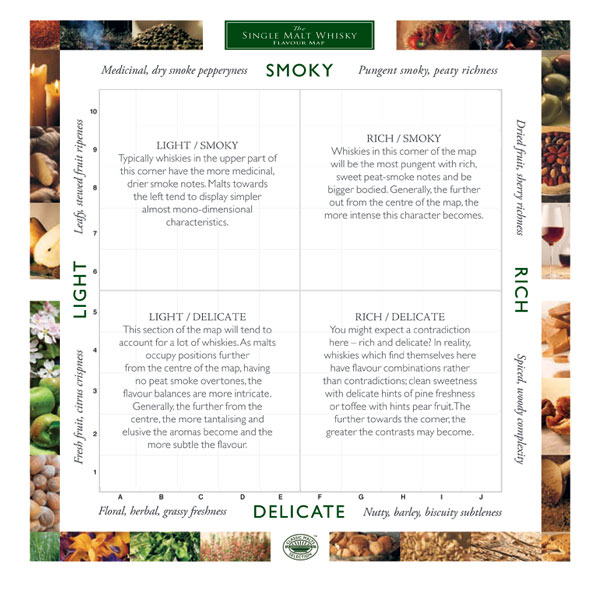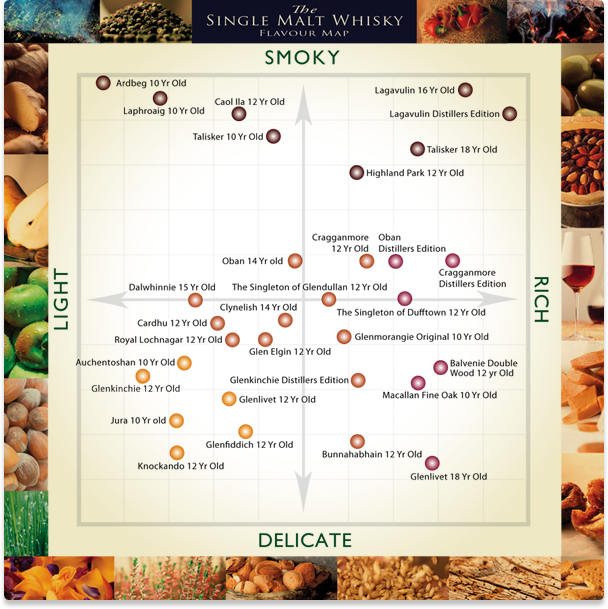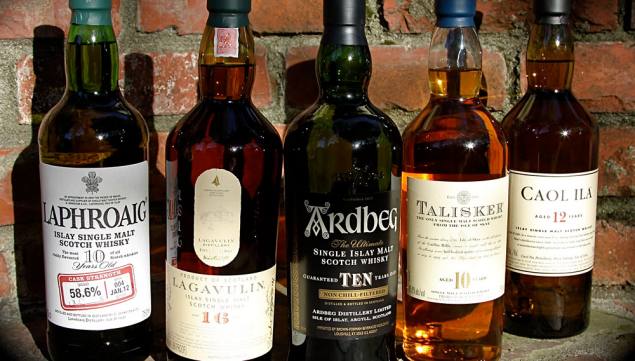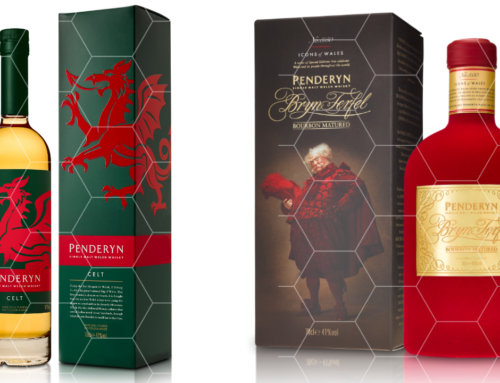Background
People who honestly love whisky cannot get over the smoky effect that it brings. I found it choking & unbearable but after taking time to know how to take it I learned to appreciate it. According to whisky.com Scotland is a place that is covered by peat bogs. This is the part of the soil that has been formed for over 1000 years when flora and fauna decays. Peat is used as a source of energy in this place and it is similar to coal but it is simply compact soil. The people also use the peat to heat the pot stills. The level of smokiness of a whisky is determined by the time the barley grain is exposed to the pungent peat smoke during drying. Depending on the time it is exposed to the smoke, you get smokeless to smoky whisky. Another peculiar thing is that malt grains give some smoky effect to the final drink even without a peat fire.
Deciphering Whisky
The Flavour Map will help you choose a single malt whisky based on its taste. Developed by some of Scotland’s most experienced professionals, the map demonstrates that – when it comes to flavour in a glass of whisky – all single malts can be plotted on a simple grid. Created by the renowned whisky expert Dave Broom, and Jim Beveridge, one of the industry’s great noses, it’s an innovative way of comparing and assessing single malts. The Flavour Map means you can identify how light or rich, and how smoky or delicate a whisky is compared to ones you may already be familiar with.To make it even easier, within the map our experts have identified four distinct flavour profiles- Source.malts.com
 This is where people go wrong when tasting whisky. From the chart you can see that one should start with delicate whiskies, to light, rich then to smoky ones.
This is where people go wrong when tasting whisky. From the chart you can see that one should start with delicate whiskies, to light, rich then to smoky ones.
The most smoky whiskies are Ardberg, Laphroaig, Caol ila, Talisker, Lagavulin, Highland Park. You will want to stay away from this until you graduate & understand about the complex flavours and processes.









